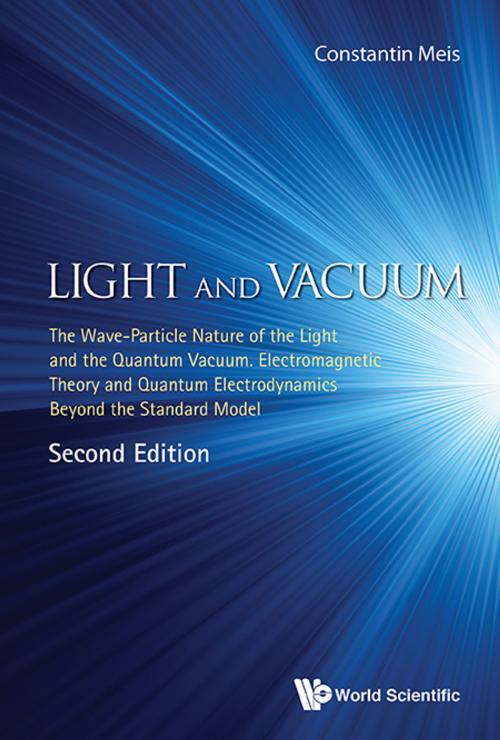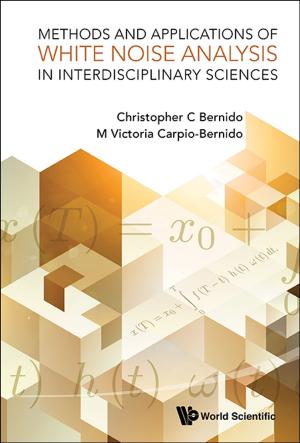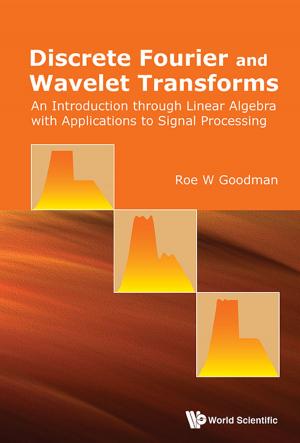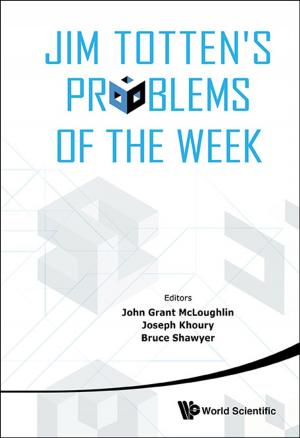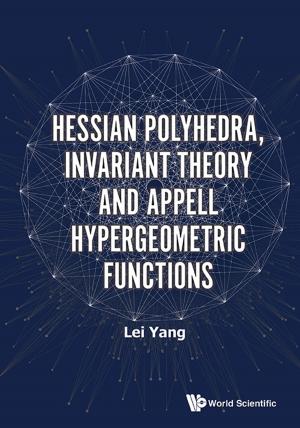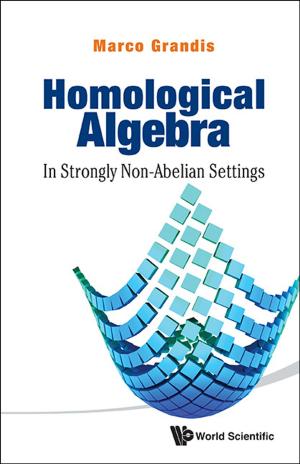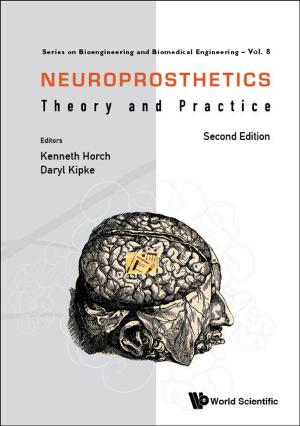Light and Vacuum
The WaveParticle Nature of the Light and the Quantum Vacuum. Electromagnetic Theory and Quantum Electrodynamics Beyond the Standard Model
Nonfiction, Science & Nature, Science, Physics, Electromagnetism, Quantum Theory| Author: | Constantin Meis | ISBN: | 9789813220119 |
| Publisher: | World Scientific Publishing Company | Publication: | March 3, 2017 |
| Imprint: | WSPC | Language: | English |
| Author: | Constantin Meis |
| ISBN: | 9789813220119 |
| Publisher: | World Scientific Publishing Company |
| Publication: | March 3, 2017 |
| Imprint: | WSPC |
| Language: | English |
Light and Vacuum presents a synthesis of selected fundamental topics of electromagnetic wave theory and quantum electrodynamics (QED) and analyzes the main theoretical difficulties encountered to ensure a coherent mathematical description of the simultaneous wave–particle nature of light, put in evidence by the experiments. The notion and the role of the quantum vacuum, strongly related to light, are extensively investigated.
Classical electrodynamics issued from Maxwell's equations revealed the necessity of introducing the notion of volume for an electromagnetic wave to stand entailing precise values of cut-off wavelengths to account for the shape and dimensions of the surrounding space. Conversely, in QED, light is considered to be composed of point particles disregarding the conceptual question on how the frequency of oscillating electric and magnetic fields may be attributed to a point particle.
To conciliate these concepts, the book provides a comprehensive overview of the author's work, including innovative contributions on the quantization of the vector potential amplitude at a single photon state, the non-local simultaneous wave–particle mathematical representation of the photon and finally the quantum vacuum. The purpose of the advanced elaborations is to raise questions, give hints and answers, and finally aspire for further theoretical and experimental studies in order to improve our knowledge and understanding on the real essence of Light and Vacuum.
In this new edition, improvements have been made to the various chapters taking into account the actual status of the knowledge in this field. The photon wave function is further analyzed and a new concept of quantum vacuum is advanced compatible with recent astrophysical observations.
Contents:
- Introduction
- Historical Survey and Experimental Evidence
- Basic Principles of the Electromagnetic Wave Theory
- From Electromagnetic Waves to Quantum Electrodynamics
- Theory, Experiments and Questions
- Analysis of the Electromagnetic Field Quantization Process and the Photon Vector Potential. Non-Local Photon Wave–Particle Representation and the Quantum Vacuum
- Epilogue
Readership: This book is recommended for advanced postgraduate students and researchers who are interested in Quantum Mechanics and Electrodynamics.
Light and Vacuum presents a synthesis of selected fundamental topics of electromagnetic wave theory and quantum electrodynamics (QED) and analyzes the main theoretical difficulties encountered to ensure a coherent mathematical description of the simultaneous wave–particle nature of light, put in evidence by the experiments. The notion and the role of the quantum vacuum, strongly related to light, are extensively investigated.
Classical electrodynamics issued from Maxwell's equations revealed the necessity of introducing the notion of volume for an electromagnetic wave to stand entailing precise values of cut-off wavelengths to account for the shape and dimensions of the surrounding space. Conversely, in QED, light is considered to be composed of point particles disregarding the conceptual question on how the frequency of oscillating electric and magnetic fields may be attributed to a point particle.
To conciliate these concepts, the book provides a comprehensive overview of the author's work, including innovative contributions on the quantization of the vector potential amplitude at a single photon state, the non-local simultaneous wave–particle mathematical representation of the photon and finally the quantum vacuum. The purpose of the advanced elaborations is to raise questions, give hints and answers, and finally aspire for further theoretical and experimental studies in order to improve our knowledge and understanding on the real essence of Light and Vacuum.
In this new edition, improvements have been made to the various chapters taking into account the actual status of the knowledge in this field. The photon wave function is further analyzed and a new concept of quantum vacuum is advanced compatible with recent astrophysical observations.
Contents:
- Introduction
- Historical Survey and Experimental Evidence
- Basic Principles of the Electromagnetic Wave Theory
- From Electromagnetic Waves to Quantum Electrodynamics
- Theory, Experiments and Questions
- Analysis of the Electromagnetic Field Quantization Process and the Photon Vector Potential. Non-Local Photon Wave–Particle Representation and the Quantum Vacuum
- Epilogue
Readership: This book is recommended for advanced postgraduate students and researchers who are interested in Quantum Mechanics and Electrodynamics.
